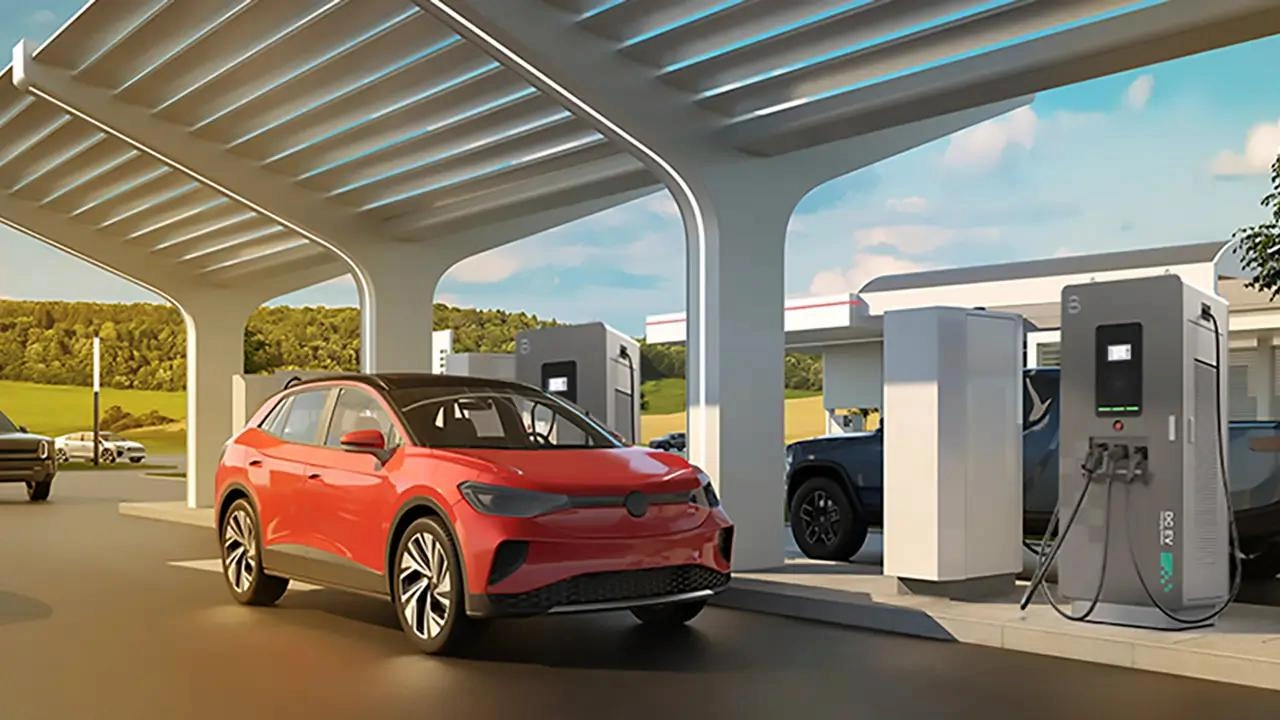Efficiently charging EVs in Warm Weather has become one of the key considerations for travel. Hot weather not only reduces the desire to go out but also poses challenges for EV use. It can easily reduce battery range and slower charging speeds.
Sri Lanka is in the tropics, and always in summer like except for the hill country and rainy days. This article will provide practical EV charging tips to balance cars and heat and tackle hot weather charging challenges.
How Does the Heating Work in an Electric Car?
Driving electric cars in hot weather is very safe but not necessarily efficient. The optimal operating temperature range for EV batteries is 20°C to 25°C (68°F-77°F). Beyond this range, accumulated heat may cause:
- Slows Down Charging Speed: The battery management system (BMS) of EVs will automatically reduce charging power during high temperatures to prevent battery overheating. This means fast charging efficiency decreases, extending charging time. In extremely high temperatures, it may even limit power for charging EVs in hot weather.
- Reduces Battery Range: High temperatures affect the chemical activity of EV batteries, leading to reduced energy utilization efficiency. The BMS also consumes additional power to regulate temperature. If the air conditioning system is opened at this time, it will further reduce the battery range.
- Prolonged High Temperatures Pose Safety Risks: Sustained high-temperature environments may accelerate battery aging. Although relatively rare, extreme temperatures can lead to battery overheating and electric vehicle safety risks.
How to Charge EVs Efficiently in Hot Weather?
Considering the optimal operating temperature for EV batteries is 20°C to 25°C, it’s important to control the battery temperature. Here are 10 essential tips for charging EVs in hot weather:

1. Avoid Charging in Hot Hours
The period from noon to afternoon (generally 10:00~16:00) has the highest temperatures and greater grid load, which may reduce charging speed. It is recommended to charge in the early morning or at night when temperatures are lower, and grid pressure is reduced, resulting in faster charging that is also more battery-friendly.
However, be it AC or DC, we should try to avoid charging during the peak times to minimize the load on the grid and to minimize fossil fuel burns. Peak times are from 5.30 AM in the morning to 8.00 AM and 6.00 PM to 10 PM in the evenings.
2. Choose Charging Stations in Shaded Areas
Some charging point operators install sunshades over EV charging stations to deal with summer sun exposure and winter rain/snow conditions. Direct sunlight will intensify battery temperature rise, leading to restricted charging speeds.
Therefore, when selecting charging points, prioritize underground parking lots or chargers with sunshades to reduce the temperature of both the chargers and the vehicle. Plus, you can also park the vehicle in a cool place.
3. Inspect Charging Cables Before Use
In areas where chargers have been installed for a long time, you may notice some charging stations have cables with surface cracks, deformations, or signs of overheating. This is because the cable insulation layer ages after prolonged use.
Such damaged cables may lead to contact issues and generate excessive heat. Therefore, when charging EVs in hot weather, prioritize those with intact cables.
4. Keep EV Charging Stations and Ports Clean
Dust and debris can hinder heat dissipation, so don’t neglect cleaning charging ports before charging. Before charging EVs in hot weather with public chargers, you can wipe the ports and plugs with a dry cloth. For home charging stations, dustproofing, moisture-proofing, and avoiding direct sunlight are essential.
5. Monitor Battery Temperature
Many EV screens or charging station apps display battery temperature status. If you notice the battery temperature is too high, pause charging to cool electric cars. After long-distance driving, let the vehicle rest for 10-15 minutes before charging to avoid residual heat buildup.
6. Only Charge up to Around 80%
Just like smartphone batteries, keeping your EV battery’s charge level between 20%-80% helps maintain battery health. Therefore, it’s recommended to set the charging limit at 80% and only fully charge temporarily before long-distance trips.
7. Use Level 3 Fast Charging Only When Necessary
The high current from fast charging significantly increases battery temperature, and frequent fast charging in summer may affect battery health. Therefore, if your travel plans aren’t that urgent, prioritize using 7kW-22kW chargers for daily top-ups. Reserve fast charging mode for public charging stations on highways or in urban areas when needed.
8. Avoid Charging Immediately After Parking
After driving, the EV battery itself generates heat due to discharging, and the battery temperature remains high after parking. It is recommended to wait at least 15 minutes to cool electric cars before charging EVs in hot weather, especially at noon.
9. Regularly Check Battery and Charging Station Conditions
To better extend the service life of EV batteries and charging points, regular inspections are necessary, including checking wiring, grounding, and heat dissipation. Regular battery health checks visualize the impact of daily usage habits on the car battery in hot weather, enabling improved maintenance measures to be taken subsequently.
Wanna Invest in Future’s Fuel?
eMotion provides total consultancy services from the business plan level to the end of life of the Chargers, ensuring profitability of the CSO (Charging Center Owners).
EVB Chargers powered by eMotion feature:
- Smart Software Management: Supports real-time monitoring of charging status, energy consumption data, and fault alerts.
- Dynamic Load Balancing: Dynamically allocates power when using household appliances or charging multiple EVs simultaneously.
- Temperature Monitoring & Cooling System: Monitors operating temperatures of all components in real-time.
- Comprehensive Safety Protection: Overvoltage and overcurrent protection, fireproofing, and high IP ratings.
- Integrates Solar Panels & Energy Storage System: This not only prevents direct sunlight exposure but also reduces reliance on the grid.
